The scaffolding that has surrounded Dublin's Four Courts for almost two years will come down this summer as a restoration project on the stone caps that hold up the historic building's dome draws to a close.
The conservation work by the Office of Public Works (OPW) has cost around €5.5m.
A landmark on Dublin's skyline for over 200 years, the Four Courts has been through a lot, including shelling and a fire during the Civil War in 1922
The OPW repaired it back then, but in 2011 some stone fell from the roof, suggesting problems with the decorative caps that hold up the buildings iconic dome.
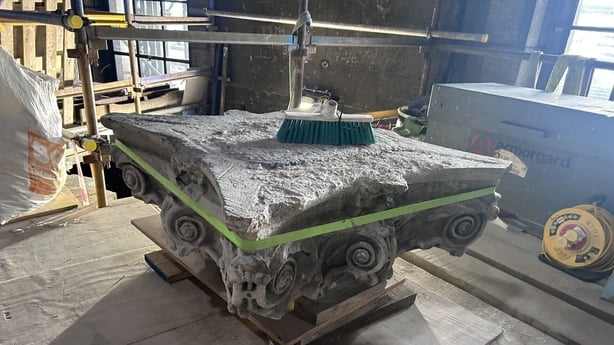
When conservation architects from the OPW examined the 24 decorative stone caps on top of the columns that surround the exterior, they found that some had deteriorated.
In 2023, they began a painstaking project to investigate the condition of each of the ornate structures.
The structures, which are known as 'capitals', are made up of two pieces, with a combined weight of over a tonne.
Each had to be carefully removed, brought to specialist stonemasons in Co Clare to be inspected, either repaired or replaced and then carefully reinstated.
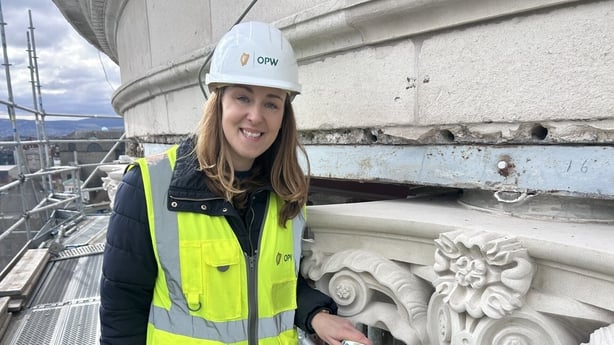
Audrey Farrell, Senior Conservation Architect with the OPW, said it was a privilege to be involved in the project, but explained the painstaking process of trying to preserve a part of Irish history.
She said: "These were installed in 1796 when the Four Courts was built. In 1922 they were shelled, and there was a fire so these capitals were quite damaged.
"They were retained at the time, but the damaged areas were turned around to face into the walls and the undamaged part to face the city.
"When we came to inspect the, 100 years later we found their condition had deteriorated. Now we're at the stage where we need to take each capital out, have it inspected by the conservation architect, the engineer and an expert stone mason from Irish Natural Stone in Co Clare to see if it's structurally sound.
"If we find that one of these parts cannot be reused, a new matching hand carved capital piece is instated instead.
"Each full stone capital takes over 700 man hours to be carved by hand. They're over a tonne in weight, so when we are bringing them back up, they have to be brought up in two sections, the bottom half and the top half."
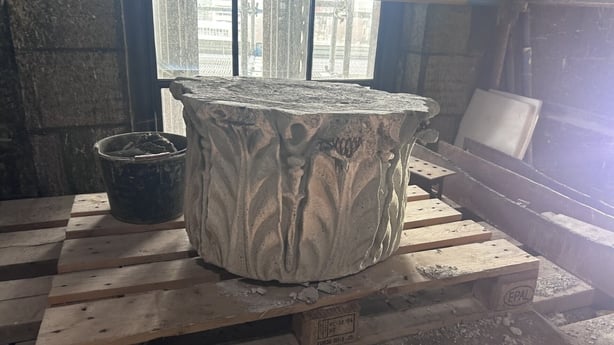
"They are brought into the Round Hall of the Four Courts, up through the existing hole in the ceiling into the upper dome, then out onto the scaffold, hoisted up to the capitals level. And then very carefully reinstated, bottom stone and then stop stone," she added.
The cost of the restoration and refurbishment, which can only take place outside the court's working hours, is expected to be around €5.5m.
The OPW team showed the progress of the project to new Minister of State in Department of Public Expenditure and Reform with responsibility for the OPW Kevin 'Boxer' Moran.
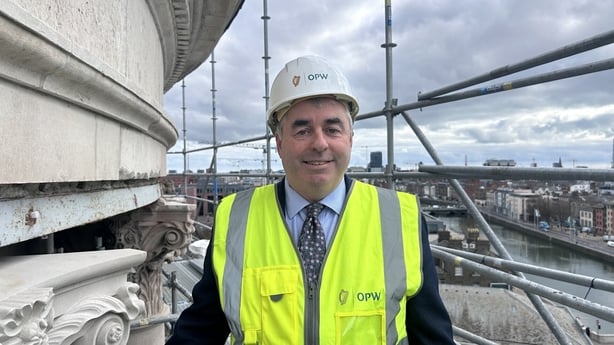
The tour took him up several flights of stairs up into the interior of the dome, which is pockmarked on its sides by the bullet holes from the Civil War while the vast stone ceiling is decorated with picture of the stars in the night sky.
The tour then moved to exterior scaffolding around the outside of the dome, more than 100 feet above the River Liffey, which has panoramic views of the capitals city centre.
Mr Moran said he was overwhelmed by the workmanship involved and that the OPW plays a key role in futureproofing buildings like the Four Courts.
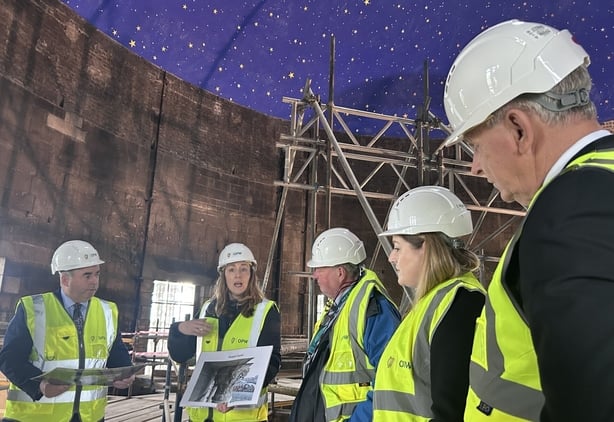
He said: "If you look back on OPW, we're protecting buildings for the last 200 years, and to be here today to see the workmanship it's amazing. Its very important to me to roll out more and more of these projects, because this is the future.
"People speak about all our iconic buildings all over the world. The Four Courts is huge to the people of Dublin, huge to people of the country. Buildings like this, we want to protect going into future."
This final phase of this two year project will take place when the courts are in recess in August.
During that time, all of the scaffolding will be removed, restoring the Four Courts to its former glory.





